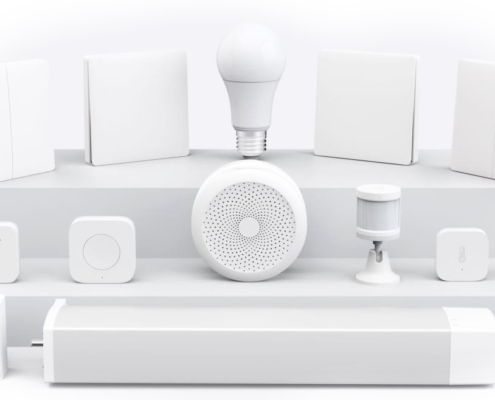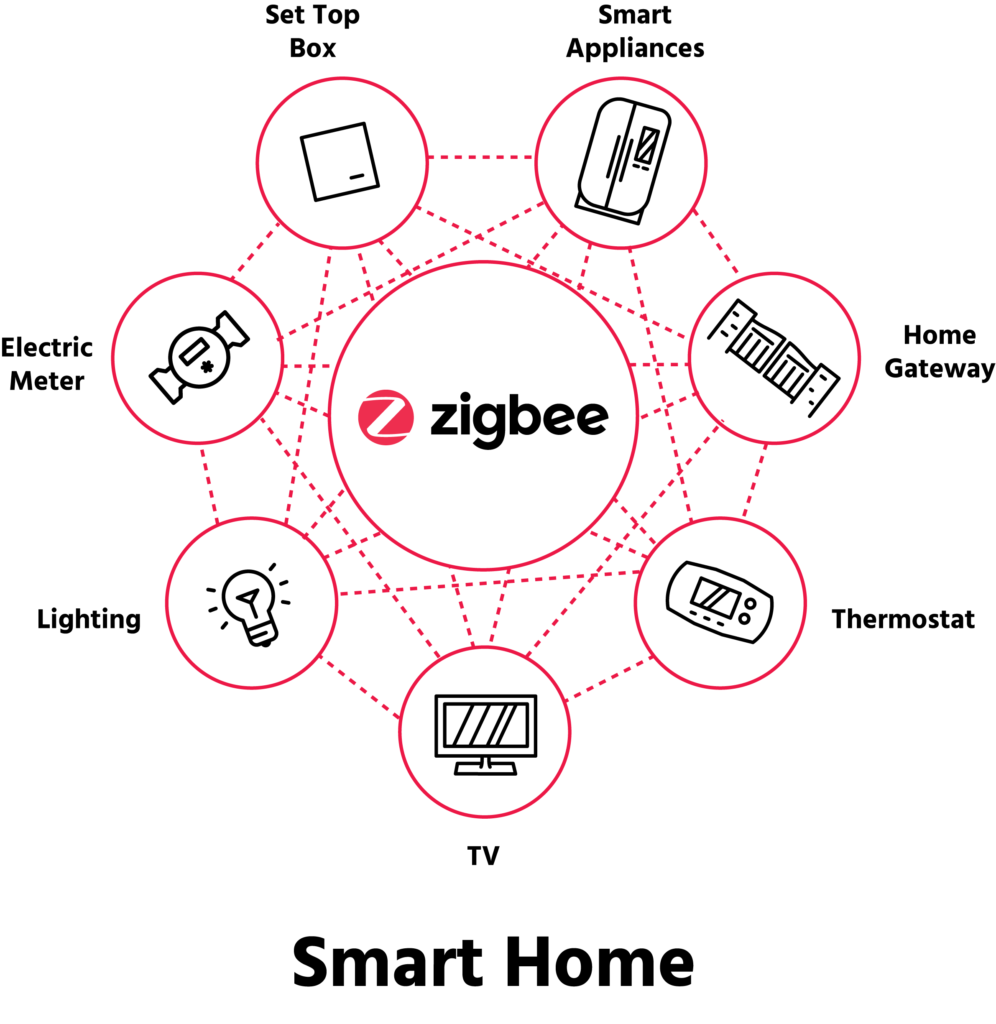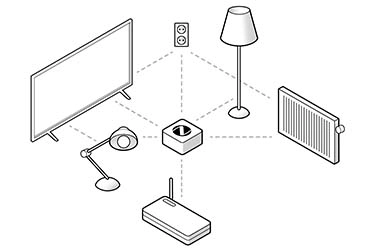Zigbee Mesh Networks:
A Smart Home Essential
Last updated: January 20, 2025
Written by: TechMate
Reading time ~4.2 minutes
Total Views: 5,153
Categories: Technologies
When it comes to building a reliable smart home, the way your devices communicate is just as important as the devices themselves. Enter Zigbee, a low-power, wireless communication protocol specifically designed for smart home systems. What makes Zigbee stand out is its use of a mesh network, ensuring seamless connectivity across your home.
What is Zigbee?
Zigbee is a wireless communication standard that allows smart home devices to connect and communicate efficiently. It’s known for its low energy consumption, high reliability, and ability to support a large number of devices simultaneously. Zigbee operates on the IEEE 802.15.4 standard, similar to Wi-Fi and Bluetooth, but it’s optimized for small data packets and short-range communication.
How Does a Zigbee Mesh Network Work?
Unlike traditional networks, where every device connects directly to a central hub (like your Wi-Fi router), a Zigbee mesh network enables devices to relay signals to one another. This creates a web-like structure, where each device (called a node) acts as both a transmitter and receiver.
Here’s why the mesh design is so powerful:
Extended Range: Devices can pass signals from one to another, extending the network’s range far beyond the hub’s reach.
Redundancy: If one node fails, the network automatically reroutes signals through other nodes, ensuring uninterrupted connectivity.
Energy Efficiency: Zigbee devices typically operate on batteries and use minimal power, making them ideal for sensors, lights, and other low-energy gadgets.


Benefits of Zigbee Mesh Networks in Smart Homes
Scalability
A single Zigbee network can support up to 65,000 devices. While you might not need that many, it’s reassuring to know that adding new devices won’t strain the system.
Reliability
Thanks to the mesh structure, your network remains stable even if a device goes offline. The self-healing nature of Zigbee ensures smooth operation.
Low Power Usage
Devices like motion sensors and door/window contacts can run on small batteries for months or even years because Zigbee uses minimal power.
Reduced Wi-Fi Congestion
Zigbee operates on a different frequency than Wi-Fi, which means your smart home won’t interfere with your internet speeds.
Common Zigbee-Compatible Devices
Zigbee works with a wide variety of smart home products. Here are some examples:
Smart Lights: Philips Hue and Sengled offer Zigbee-enabled bulbs for easy automation.
Smart Plugs: Control your appliances remotely with Zigbee-powered plugs.
Sensors: Motion detectors, temperature sensors, and door/window sensors are common Zigbee devices.
Smart Locks: Brands like Yale and Schlage offer Zigbee-compatible locks.
Hubs: Devices like the HOOBS Pro bridge help unify and control your network.


Setting Up a Zigbee Mesh Network
Getting started with Zigbee is simple. Here’s what you need:
A Zigbee Hub: This acts as the brain of your network, managing all your devices. Look for hubs compatible with your ecosystem, such as HOOBS Pro.
Zigbee Devices: Start with a few devices like lights or sensors and expand as needed.
Placement: Distribute devices evenly throughout your home to create a robust mesh. Remember, powered devices (like plugs and bulbs) act as repeaters, strengthening the network.
Configuration: Use your hub’s app to add and organize devices. Most Zigbee setups are straightforward, with clear instructions for pairing.
Ideas for Using Zigbee in Your Home
Automate Lighting
Set up Zigbee-enabled lights to turn on when you enter a room or to dim automatically at night.
Secure Your Home
Use Zigbee motion sensors and door/window sensors to trigger alerts or activate smart locks.
Temperature Control
Use Zigbee temperature sensors to automate your thermostat, ensuring optimal comfort.
Challenges of Zigbee Mesh Networks
While Zigbee is excellent, it’s not without its drawbacks:
Hub Dependency: You’ll need a Zigbee hub for the network to function, which is an additional upfront cost.
Interference: Zigbee operates on the 2.4 GHz frequency, which can sometimes clash with other devices like Wi-Fi routers.
Limited Range Per Device: While the mesh extends range, individual devices still have a limited communication range (usually around 30-50 feet indoors).
The Future of Zigbee
With advancements like Zigbee 3.0, the protocol is becoming even more versatile, offering improved compatibility and enhanced features. Additionally, Zigbee plays a key role in Matter, a new smart home standard aimed at unifying devices across ecosystems. This means your Zigbee gadgets will likely become even more interoperable in the future.
Final Thoughts
Zigbee’s mesh network design makes it a standout choice for smart home enthusiasts. Its reliability, scalability, and low power consumption make it perfect for creating a connected home that just works. Whether you’re automating your lights, securing your home, or optimizing energy usage, Zigbee has the tools to make it happen.
If you’re looking to build a smart home that’s as dependable as it is intelligent, give Zigbee a try. You might just find it’s the missing link to your perfect setup. 😊
Share This Article with Your Friends
Unleash the full potential of your smart home
“Our dedication has always been to unify and simplify your smart home experience”
“We take it a step further by making home automationeasy for your everyday life, ensuring everything works seamlessly and effortlessly for you.”
